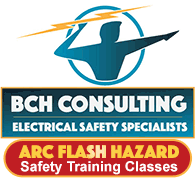Is electrical equipment considered de-energized even though there is a voltage present on the line side of the open disconnect?
In this month’s safety tip, we are going to answer a frequently asked question. Can I consider electrical equipment to be in an electrically safe condition if the line side of the disconnecting means remains energized?
Let us say you are going to perform work inside of an electrical panel. You open the main disconnect, properly lock it out and verify the absence of voltage on the load side of the disconnect. Can you work safely, i.e., remove PPE, or do you need to disconnect electrical service upstream so that the line side of the disconnect at the point of work is also de-energized?
Although this would have to be evaluated on a case-by-case basis to assess the risk of both shock and arc flash, the answer would be based on three conditions:
1. Is the energized line side of the disconnecting means exposed?
2. Where will the work be performed?
3. What work will be performed?
NFPA 70E Guidance
NFPA 70E defines “Exposed” (as applied to energized electrical conductors and circuit parts). Capable of being inadvertently touched or approached nearer than a safe distance by a person. It is applied to electrical conductors or circuit parts that are not suitably guarded.
NFPA 70E 130.4(G) states that no qualified person shall approach or take any conductive article closer than the restricted approach boundary to exposed energized electrical conductors or circuit parts unless one of the following conditions applies:
• The qualified person is insulated or guarded i.e., wearing insulating gloves.
• The energized electrical conductors or circuit parts are insulated from the qualified person and from any other conductive objects at a different potential.
Based on this guidance from NFPA 70E if the energized line side of the disconnecting device is properly guarded. Such as a plexiglass cover over the conductors, the energized conductors are not exposed thus preventing inadvertent contact with energized parts. Because these parts are properly guarded, no other safety-related work practices would be required for working near them. If the electrical circuitry below the disconnect has been confirmed to be in an electrically safe work condition. See NFPA 70E article 120.5 (properly verified as de-energized by a qualified person, locked and tagged, etc) then work can be performed in the panel without additional safety-related work practices or de-energizing the entire panel by isolating upstream.
This scenario changes completely If the work will be performed on the energized line side of the disconnect, if the cover is removed from the line side of the disconnect exposing energized conductors, and or an arc flash could be created.
Working on the Energized Line Side
If working directly on these energized conductors, NFPA 70E as well as OSHA 1910.333(a)(1) would consider this to be energized work and the employer would need to justify why the equipment cannot be locked and tagged and worked on in a de-energized state. This would be extremely dangerous and should never be attempted.
Removing the Cover Changes the Game
If the cover is removed exposing the energized line side of the disconnect any time a qualified person enters the restricted approach boundary to these parts, see NFPA 70E table 130.4(E)(a) for AC voltages and 130.4(E)(b) for DC voltages, then that person would have to employ safety-related work practices such as wearing rubber insulating gloves rated for the voltage that they will be exposed to.
Arc Flash Concerns
The above guidance from NFPA 70E generally addresses the risk of electric shock. Keep in mind that there is an equally dangerous hazard in the form of arc flash. Tasks such as drilling holes in the top of panels can create flying metal particles. These metal chips can find their way into the energized line side of the disconnect even with guards in place. This is one of the more common ways that an arc flash is created. These instances would require that the line side of the disconnecting be de-energized as well. Again, the work needs to be evaluated on a case-by-case basis to identify both the risk of shock and arc flash.
Local Factory or Corporate Electrical Safety Program
We have seen some company safety programs that specifically call out the above example scenario. One such policy states “if any energized conductor is present in the panel, regardless of location or guarding, then the panel is considered energized “. It is OK for local or corporate electrical safety programs to have additional requirements beyond those required by NFPA 70E and OSHA so long as they are in compliance. In this case, upstream LOTO shall be utilized.
OSHA Guidance
OSHA gives clear guidance on this scenario in a Letter of Interpretation dated July 28, 2006.
https://www.osha.gov/laws-regs/standardinterpretations/2006-07-28
See the entire Letter of Interpretation by clicking here:
[activecampaign form=3]







